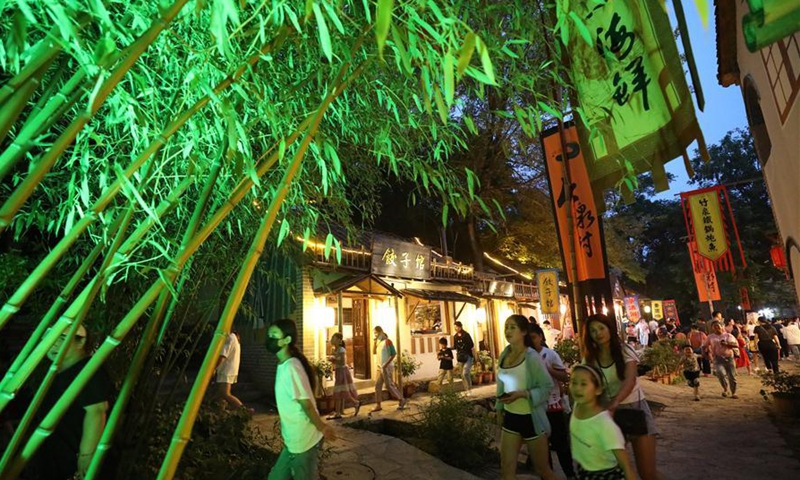




- BRNN
- BRI News
- BRNN News
- Database
Official Documents Polices and Regulations
Inter-government Documents International Cooperation BRI Countries
Business Guide Economic Data BRI Data
Trade
Investment Projects Latest projects
Cases - Content Pool

Tourists pay an evening visit to the Zhuquan Village scenic area in Yinan County of Linyi, east China's Shandong Province, June 25, 2020. The Zhuquan Village scenic area is open to tourists during the Dragon Boat Festival national holiday with COVID-19 prevention and control measures applied. Photo:Xinhua
China's tourism industry saw a steady recovery during the three-day Dragon Boat Festival, with travel rebounding to about 50 percent of last year's level. The recovery came despite a spike in coronavirus cases in Beijing, which bodes well for China's consumption market.
There has also been a shift in the behavior of Chinese tourists, who now opt to make reservations before making trips amid epidemic prevention efforts. Also, short-distance and high-end trips gained in popularity among Chinese tourists during the three-day holidays.
China received 48.81 million visitors during the three-day Dragon Boat Festival holidays, which is 50.9 percent of last year's amount, according to data from the Ministry of Culture and Tourism. Total income of 12.29 billion yuan ($1.74 billion) was generated, representing 31.2 percent of last year's level.
During the Dragon Boat Festival holidays, China transported 78.79 million passengers via railways, roads, waterways and civil aviation, according to data released by the Ministry of Transport on Saturday. Total highway traffic reached 92.69 million vehicles.
A spokesperson for ctrip.com told the Global Times on Saturday that the tourism sector's rebound during the short holidays has bolstered market confidence and showed that the industry, despite being extremely sensitive, is also highly resilient to external shocks.
"The revenue in the first two days of the holiday surpassed that of the three-day Qingming Festival. This is particularly impressive, given the coronavirus outbreak in Beijing and rainy weather," the spokesperson said.
Data sent by lvmama to the Global Times showed that over half of the tourists travelled to neighboring areas during the holidays. Almost all travelers booked in advance as the capacity of scenic spots across China is required to be capped at 30 percent.
The holidays also saw rising orders for high-end hotels and resorts. Data from ctrip.com showed that hot travel spots included amusement parks such as Shanghai Disneyland and Zhuhai Changlong Ocean Park.
However, given the current situation of the epidemic and the extent to which passenger transportation has recovered, some analysts predicted that the China's tourism industry could still only maintain a level of between 50 and 60 percent of last year's.
"In the second half of the year, whether it is the Mid-Autumn Festival or National Day holiday, passenger flow and tourism revenue will recover to about 50 to 60 percent of the same period last year," Tian Yun, vice director of the Beijing Economic Operation Association, told the Global Times on Saturday, adding that China and the world will face a second wave of the coronavirus outbreak as the virus is mutating in a very complex way.
Despite a slower-than-expected recovery in the services sector for the whole year, Tian said that China's manufacturing could recover to 90 percent or more, providing a strong boost to the domestic economy.

Tel:86-10-65368972, 86-10-65369967